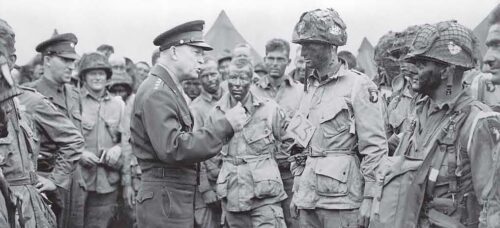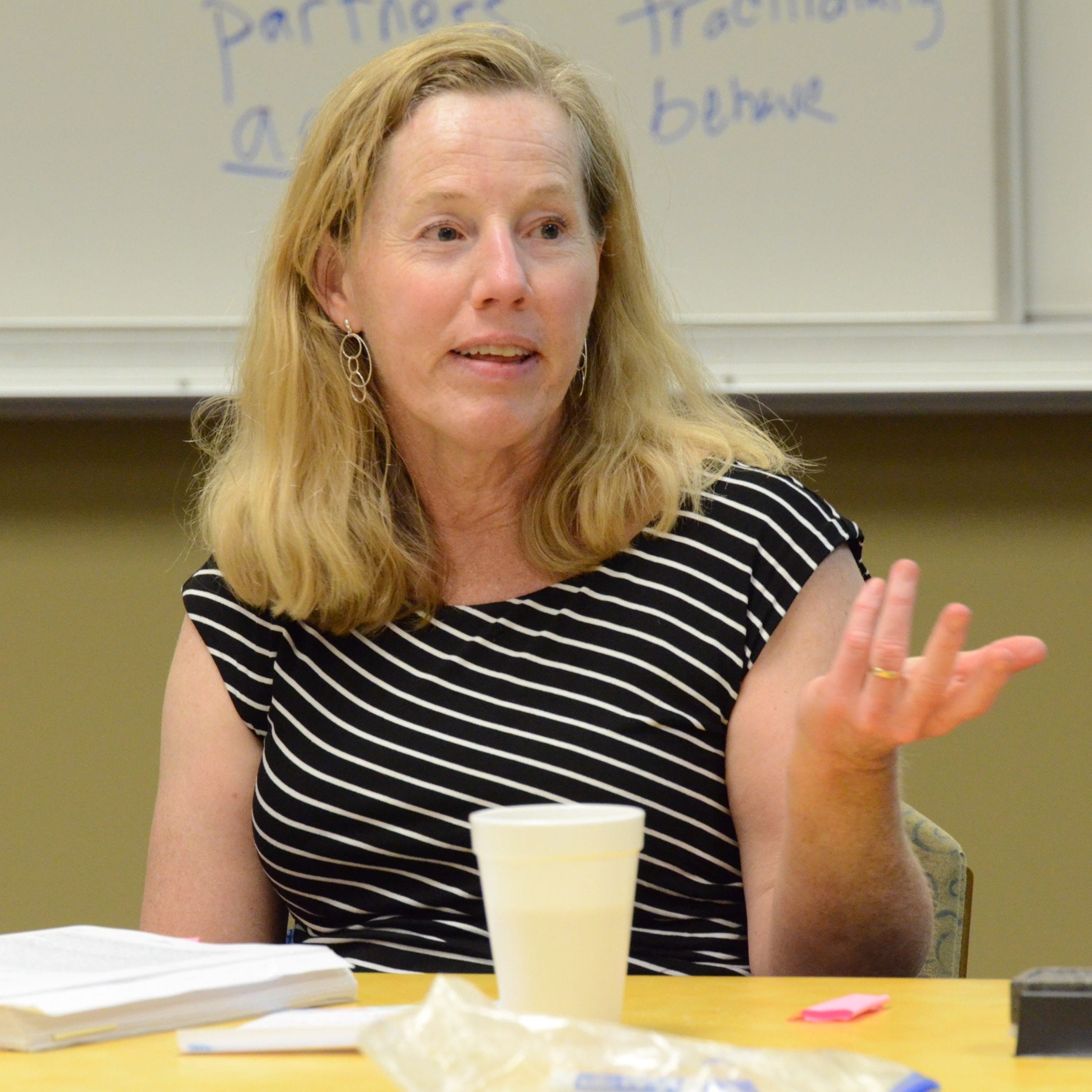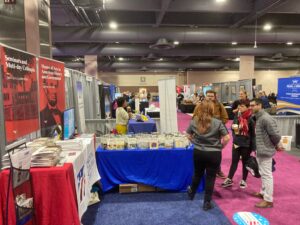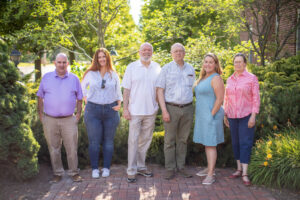
World War II: An Educator Resource

Our popular document collection on World War II, edited by Jennifer D. Keene, has been published in a second, corrected edition. After using the collection in many Teaching American History seminars, Keene asked for a new edition, in part to correct the typos that are inescapable in publishing projects, but also to address questions teachers themselves had raised. “For example, the new edition changes or redefines some of the terms used in the document introductions. I broadened the meaning of ‘casualties’ to include non-combat related deaths among military personnel, and I used the word ‘incarceration’ to refer to the internment of Japanese American citizens which more accurately describes the reality of their imprisonment,” Keene explained.

Keene is Professor of History and Dean of the Wilkinson College of Arts, Humanities, and Social Sciences at Chapman University. Many of the books she has authored and edited focus on her chief area of specialization, World War I. These include The American Soldier Experience (University of Nebraska Press, 2011) and Doughboys: The Great War and the Remaking of America (Johns Hopkins University Press, 2006). She is giving this expertise to a volume soon to be added to our Core Document Collection, World War I and the 1920s.
Keene is also the lead author for an American history textbook, Visions of America: A History of the United States that uses a visual approach to teaching students U.S. history. Teachers who have studied with Keene in the MAHG program have benefitted from her insightful use of photographic documents.
Recently we talked with Keene about World War II and the new edition of her collection.
We just marked the anniversary of the Pearl Harbor attack. What is the importance of that event in American history?
You can’t underestimate the importance of the attack on Pearl Harbor. It is a seminal moment for the United States. First, it ended a two- and a half-year debate over whether or not to enter the war that had begun in Europe, in a definitive way. Nothing like that had happened to silence debate about our entering the First World War. The case for the First World War was flimsy. Because there were many reasons to think that America should never have entered it, when the First World War ended, Americans were not yet convinced that the United States had to step up to a larger international role. But Pearl Harbor ended that debate. Second, the attack led to the nation’s entrance into a two-front war, a much more significant commitment in terms of troops, treasure and time than the US made in 1917—and indeed the US commitment was seen as essential to winning on both fronts. Finally, the attack persuaded Americans that they should never again leave themselves vulnerable to attack.
It changed America’s role in the geopolitical arena, prompting our military and foreign policy involvements for the rest of the 20th century and into the 21st century. It’s also logical to wonder how the attack on Pearl Harbor shaped world history; without the attack, would America have entered a two-front war? We were inching into the European war, but trying to stay out of the Pacific conflict. Would we have mobilized to the extent we did in time to prevent a German victory or a consolidation of the Japanese empire in the Far East? Either outcome would have been extremely difficult to dislodge.
Would you say, then, that after Pearl Harbor, Americans united to support the war effort in a way they had not during World War I?
We should not assume that Pearl Harbor immediately unified the nation in every way. The attack gave Roosevelt the traction to come to the defense of Europe, and eventually to pursue the vision he shared with Woodrow Wilson, of America leading a worldwide movement toward greater democracy, national self-determination, and participation in systems for collective security. Of course, Roosevelt was a better politician and diplomat than Wilson. He faced formidable obstacles; he had to dance around neutrality legislation Congress had passed (Documents 1 and 2 in the collection are the First Neutrality Act of 1935, and Senator Bennett Champ Clark’s defense of it ). As late as April 1941, Charles Lindberg argued for a policy of “America First” (Document 8). Although today we want to dismiss Lindbergh because of his fascist sympathies, he did articulate a lot of people’s worries about getting involved in another conflict.
When Pearl Harbor occurred, Roosevelt turned on a dime. But he had prepared the ground. If you study his Four Freedoms speech in January, 1941 (Document 5), and the Atlantic Charter (Document 10) of August the same year, you’ll find many similarities to Wilson’s Fourteen Points. Of course, Roosevelt had advantages Wilson lacked. He could use radio to reach Americans in their homes; and he had a talent for expressing his vision through radio.
But when you study the American home-front experience—and I think the documents in the book really speak to this—you see that there’s still a lot of turmoil here. African Americans want to know, if we’re fighting a war for democracy overseas, do we plan to ensure the rights of Black people at home? Women see an opportunity to take roles in the war effort, but there is controversy over whether this will lead to permanent changes in gender roles. And of course, one of the worst abridgements of civil liberties in the history of the United States occurred with the incarceration of Japanese American citizens in camps, who were identified as suspects simply because of their ethnic heritage.
Your collection gives readers lots of insight into the situation on the home front. More than some volumes published in our core document series, you focus a great deal on social history. What do we learn by viewing WWII through this lens?
I studied in a social history program at Carnegie-Mellon University, specializing in war and society. My first book, Doughboys: The Great War and the Remaking of America, analyzes both the impact of the First World War on American society—the way that the war became a transformational moment for the country—and the way that American society shaped the way we fought that war. In the document collection on World War II, I wanted to tell the story of the war from that perspective. Obviously, American wars are led from the executive branch, and the decision-making of the president matters a great deal. Presidential decisions determine when we make war or agree to peace, and how alliances and foreign policy are managed. Including the speeches of Lindbergh and Senator Robert Taft (Document 12) along with Roosevelt’s fireside chat on the Greer incident (Document 11) provides an opportunity for teachers and students to engage in the debates over whether to enter the war that occurred in 1941. But at the same time, in a democracy, executive decision-making is influenced by the domestic political situation, that is, the opinions of average Americans. And a president’s decision to go to war affects, in turn, the lives of everybody in this society.
To show this, I brought polling data into the collection (Documents 6 and 13). We know that the Gallup polls influenced Roosevelt; but we can also see polling results shifting toward support for the war after Roosevelt gave major speeches. I hope these documents give teachers and their students experience in reading and understanding polls, which offer so much useful data for social history.
I also wanted to bring a different lens to the familiar trope of World War II as “the good war.” From the perspective of the soldier who fights, it’s tough to speak of any war as “good.” I included an excerpt from James Fahey’s Pacific War Diary(Document 19) to illustrate the experience of those assigned to a naval ship undergoing bombardment. I included an example of Ernie Pyle’s war correspondence (“The Death of Captain Waskow,” Document 23) to show what it was like to witness heroic service during the brutal combat on the ground. As we get farther and farther away from the lived experience of the war, we tend to lose a sense of the costs of conflict. We also tend to forget the uncertainties and hardships of civilians at home.
I wanted to include visual evidence—a big interest of mine—of the war experience, so I included such images as Dorothea’s Lange’s photos of the placards announcing the Japanese American incarceration and of Japanese Americans awaiting the buses that would carry them to the camps (Document 17). Students can learn a lot from visual evidence, and they need to practice interpreting it. All of these documentary sources help students connect to history on a personal and emotional level.
We often look to the past to answer our questions about recent and current history. To fully understand the civil rights movement, or feminism and women’s struggle to secure their rights, we have to look to WWII. If we want to understand our ongoing debate over how to weigh national security interests against protection of civil liberties, we need to study World War II. After 9/11, we once again engaged this debate, and perhaps our memory of the Japanese American incarceration tempered some of our security measures.
Check back in to the blog in January, for Keene’s comments on some of the most interesting and unusual documents in the collection.




